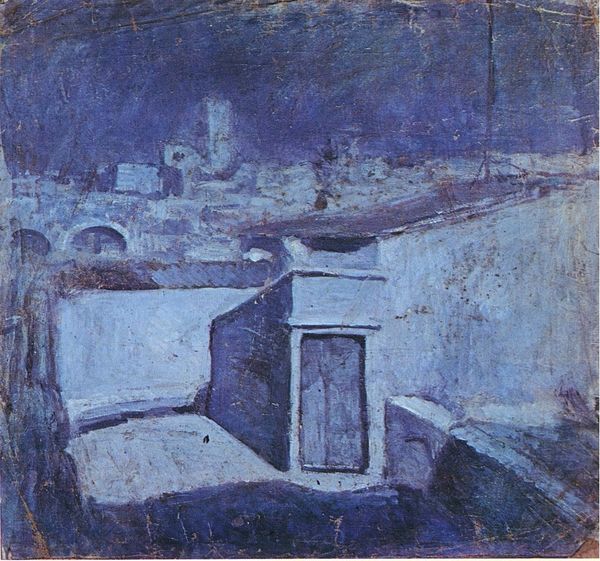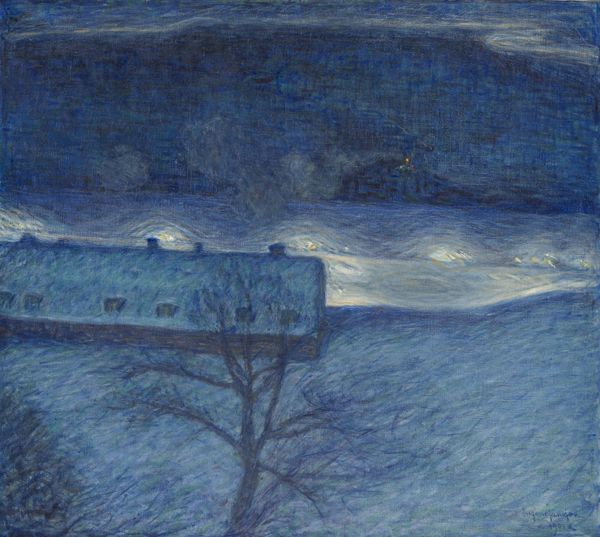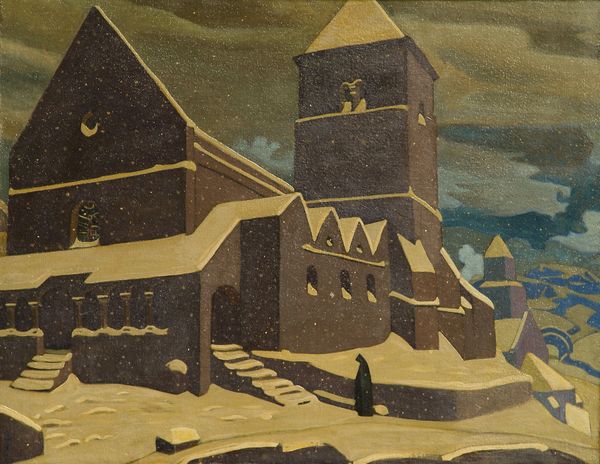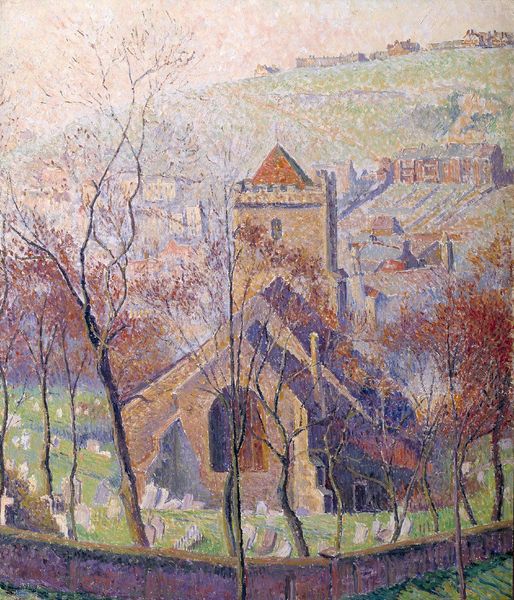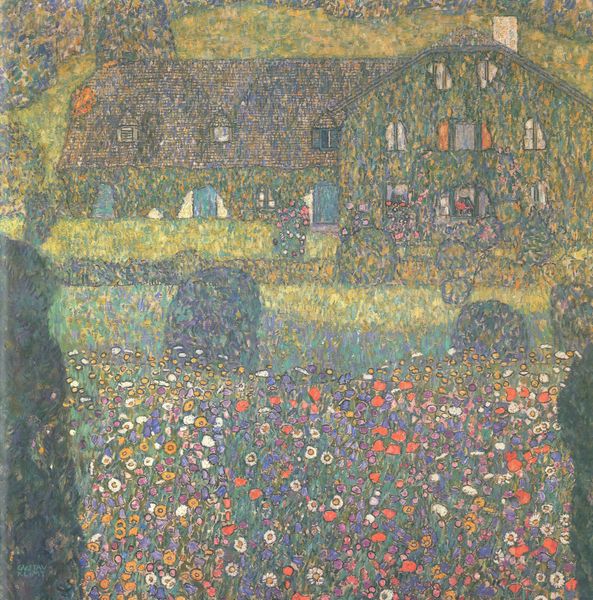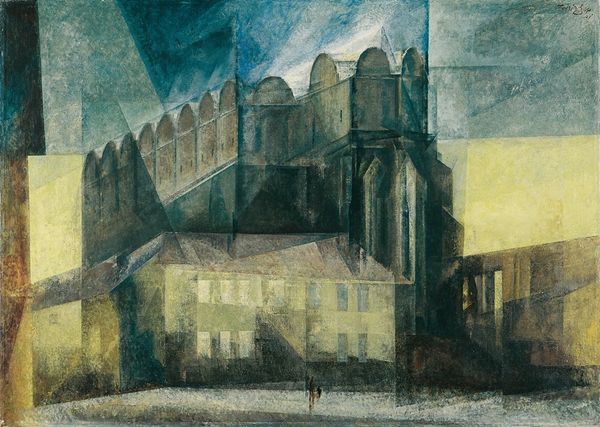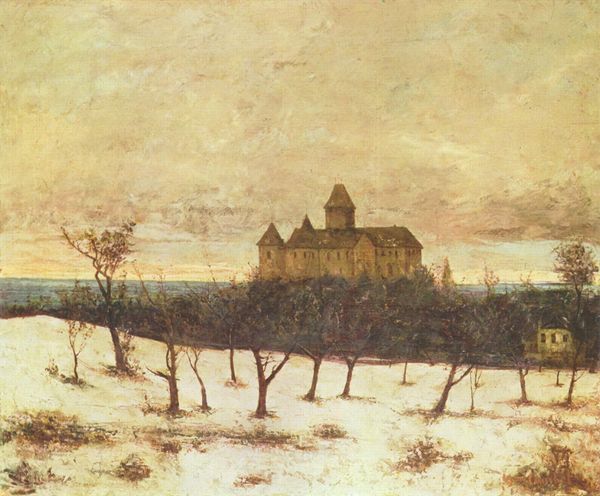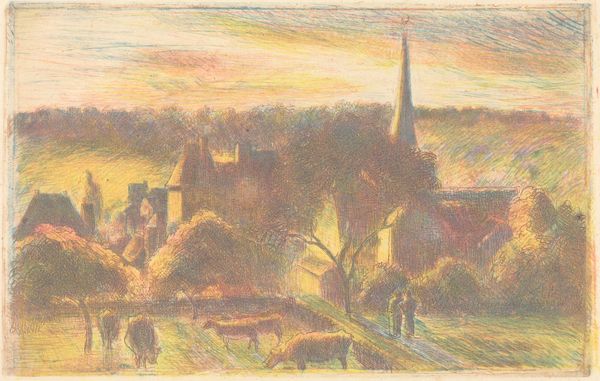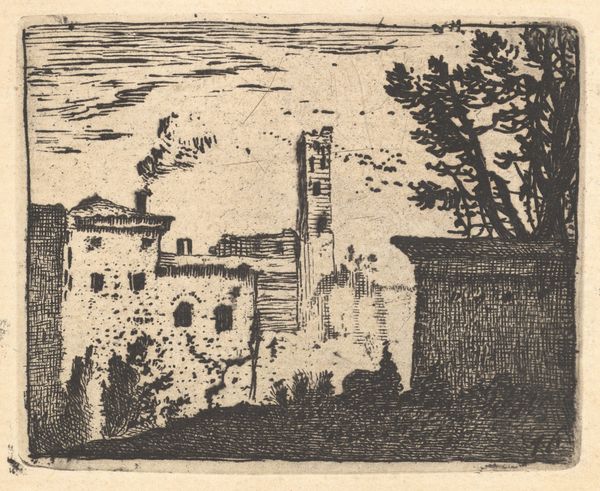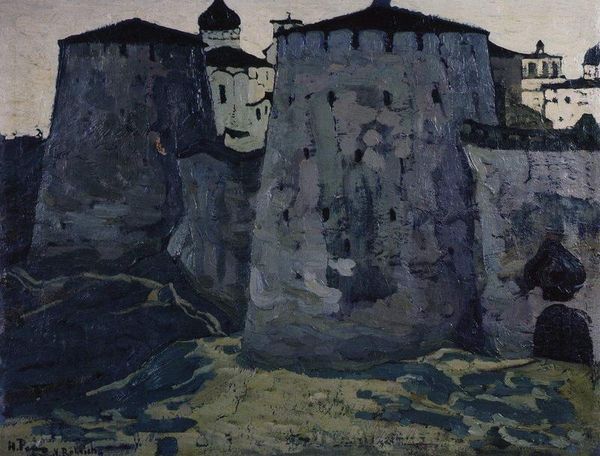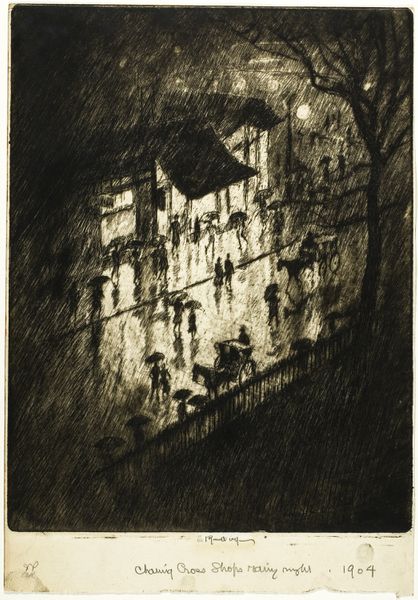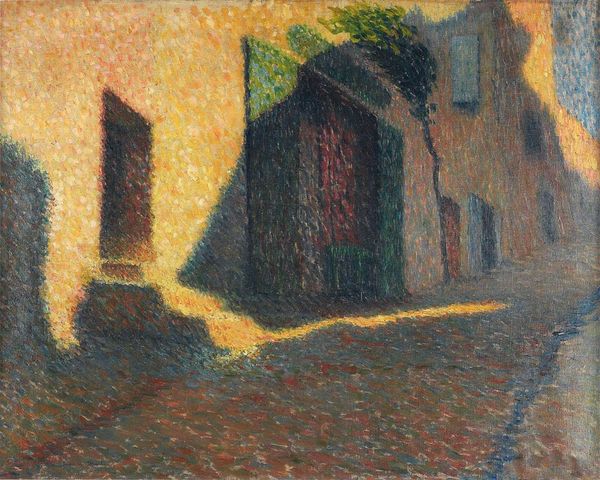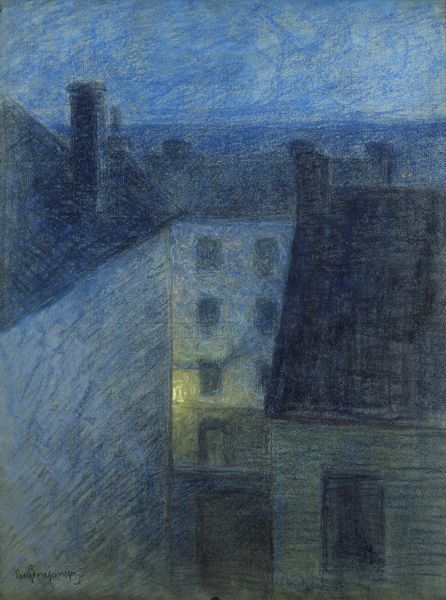
painting, oil-paint
#
impressionistic
#
painting
#
oil-paint
#
neo-impressionism
#
landscape
#
impressionist landscape
#
cityscape
Copyright: Public Domain: Artvee
Curator: Ah, yes, Maximilien Luce's "Rue Ravignan, Paris," painted in 1893 using oil paint. Editor: Immediately, the cool tones evoke a quiet solitude, wouldn't you agree? The pointillist technique almost softens the hard lines of the buildings, giving everything a hazy, dreamlike quality. Curator: Absolutely. Luce was deeply involved with Neo-Impressionism. You see that here in his deliberate application of small dots of pure color, a technique championed by Seurat and others who were invested in scientific approaches to painting, studying color theory in a very different social context than his earlier work documenting the Paris Commune. Editor: It does speak volumes, reflecting on social shifts. Consider the context. We are presented not with vibrant boulevards bustling with life, but a quiet corner bathed in an ethereal glow. The lamplight punctuates the darkness in such a beautiful, romantic way. What narratives do you see within the imagery of a city slowly entering a new kind of century? Curator: It's true. By focusing on a more marginal area like the Rue Ravignan, Luce offers us a glimpse into a Paris less often depicted – far from Haussmann's grand boulevards and the glittering spectacles of modern life. You can sense a melancholy in the buildings' stoicism and their response to modernization. This challenges us to examine the complexities of urban progress and who it truly benefits. Editor: Exactly! Note also those figures – almost swallowed by the shadows. What does that signify in this intersectional narrative about visibility? This evokes a potent commentary on class, power, and urban alienation. The subtle detail is not accidental. It challenges the romantic ideal. Curator: An interesting point about the figures and their significance in highlighting socio-economic disparity. Editor: Luce offers us more than just a beautiful cityscape; he provides us with a moment to ponder how art intersects with questions of urbanism. This painting compels us to reimagine the familiar spaces of Paris as spaces filled with the struggles and resilience of its inhabitants. Curator: It reminds us of the constant tension and negotiation that happens in the public role of art as historical interpretation, revealing untold socio-political nuances within these places. Editor: Agreed, making this more than a visual experience. Thank you for the insights.
Comments
No comments
Be the first to comment and join the conversation on the ultimate creative platform.
